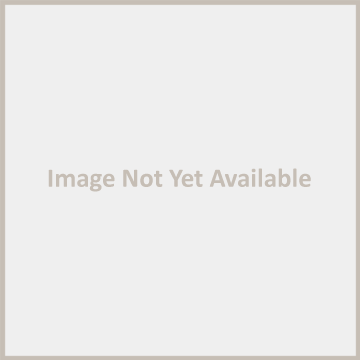Explore Collections


You are here:
CollectionsOnline
/
Cockers Arithmetick: being, a plain and familiar method, suitable to the meanest capacity, for the full understanding of that incomparable art, as it is now taught by the ablest school-masters in city and country. Composed by Edward Cocker, late practitioner in the arts of writing, arithmetick, and engraving: being that so long since promised to the world. Perused and published, by John Hawkins, writing-master near St. Georges Church in Southwark, by the authors correct copy, and commended to the world by many eminent mathematicians and writing-masters in and near London. The forty-eighth edition, carefully corrected and amended. By George Fisher, ...
Browse
COCKER, Edward (1631--1675)
[Arithmetick. 1736]
Cockers Arithmetick: being, a plain and familiar method, suitable to the meanest capacity, for the full understanding of that incomparable art, as it is now taught by the ablest school-masters in city and country. Composed by Edward Cocker, late practitioner in the arts of writing, arithmetick, and engraving: being that so long since promised to the world. Perused and published, by John Hawkins, writing-master near St. Georges Church in Southwark, by the authors correct copy, and commended to the world by many eminent mathematicians and writing-masters in and near London. The forty-eighth edition, carefully corrected and amended. By George Fisher, ...
London (Place), printed for A. Bettesworth, and C. Hitch; R. Ware; and J. Hodges,, 1736.
[8], 183, [1] p. : frontis. port. ; 16.3 cm. (12º)
Based on Cocker's Tutor to arithmetic entered in Stationers Register June 23, 1664. Deservedly or undeservedly, the name of Edward Cocker obtained a great currency in the public consciousness for many decades on account of the present book. First published in 1678, three years after Cocker's death, the Arithmetick was used by generations of mathematics students, and according to ODNB had reached its twentieth edition by 1700 and its fifty-fifth by 1758, not counting editions with repeat numbering or no numbering. Cocker was an engraver of some merit, mentioned with admiration in Pepys's Diary, but he was not really the author of the present text, which was actually written by his friend the publisher John Hawkins. Publisher's advertisements on fly-leaf (recto of port.) and at end. ESTC t11867.
Copy Notes Inscribed in ink on first front free-endpaper: William Lindsay; John Maybank; John Mathews His Book / Nov. 5th 1782; and on second front free-endpaper Wm Lynsey 178[9?]. Inscribed in ink on first rear free-endpaper: John Mathews Oct. 20:1788 / Great Chapel St Soho / London; and on second rear free-endpaper on recto, Novr 22 1788, and on the verso: William Mathews [?] / Hart Crandley [i.e. Cranleigh?] Surry 1776 / William Luster L[illegible] / to go too the Floo[ck?] and there to.
Binding C18th calf, later maroon morocco spine-label and gilt date.
Reference Number 234
Additional Names Lindsay, William; Maybank, John; Mathews, John; L'Estrange, Sir Roger (1616--1704); Hawkins, John (fl.$1677); Fisher, George; Mathews, William; Luster, William
[Arithmetick. 1736]
Cockers Arithmetick: being, a plain and familiar method, suitable to the meanest capacity, for the full understanding of that incomparable art, as it is now taught by the ablest school-masters in city and country. Composed by Edward Cocker, late practitioner in the arts of writing, arithmetick, and engraving: being that so long since promised to the world. Perused and published, by John Hawkins, writing-master near St. Georges Church in Southwark, by the authors correct copy, and commended to the world by many eminent mathematicians and writing-masters in and near London. The forty-eighth edition, carefully corrected and amended. By George Fisher, ...
London (Place), printed for A. Bettesworth, and C. Hitch; R. Ware; and J. Hodges,, 1736.
[8], 183, [1] p. : frontis. port. ; 16.3 cm. (12º)
Based on Cocker's Tutor to arithmetic entered in Stationers Register June 23, 1664. Deservedly or undeservedly, the name of Edward Cocker obtained a great currency in the public consciousness for many decades on account of the present book. First published in 1678, three years after Cocker's death, the Arithmetick was used by generations of mathematics students, and according to ODNB had reached its twentieth edition by 1700 and its fifty-fifth by 1758, not counting editions with repeat numbering or no numbering. Cocker was an engraver of some merit, mentioned with admiration in Pepys's Diary, but he was not really the author of the present text, which was actually written by his friend the publisher John Hawkins. Publisher's advertisements on fly-leaf (recto of port.) and at end. ESTC t11867.
Copy Notes Inscribed in ink on first front free-endpaper: William Lindsay; John Maybank; John Mathews His Book / Nov. 5th 1782; and on second front free-endpaper Wm Lynsey 178[9?]. Inscribed in ink on first rear free-endpaper: John Mathews Oct. 20:1788 / Great Chapel St Soho / London; and on second rear free-endpaper on recto, Novr 22 1788, and on the verso: William Mathews [?] / Hart Crandley [i.e. Cranleigh?] Surry 1776 / William Luster L[illegible] / to go too the Floo[ck?] and there to.
Binding C18th calf, later maroon morocco spine-label and gilt date.
Reference Number 234
Additional Names Lindsay, William; Maybank, John; Mathews, John; L'Estrange, Sir Roger (1616--1704); Hawkins, John (fl.$1677); Fisher, George; Mathews, William; Luster, William
